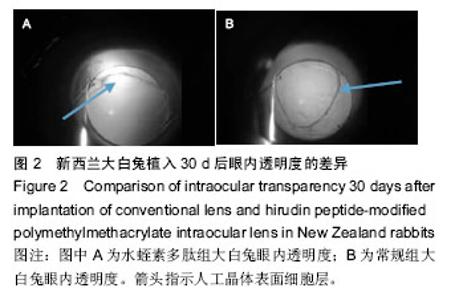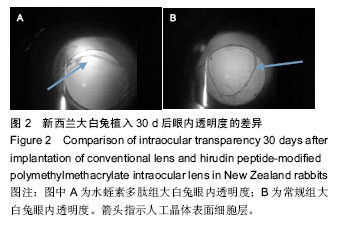| [1] Murata M, Noda K, Fukuhara J, et al. Soluble vascular adhesion protein-1 accumulates in proliferative diabetic retinopathy. Invest Ophthalmol Vis Sci. 2012; 53(7):4055-4062. [2] 王爱民,刘芳艳,伍美.个性化护理管理在眼科白内障手术患者中的应用[J].国际眼科杂志, 2011,11(5):924-925.[3] Ribeiro AS, Albergaria A, Sousa B, et al. Extracellular cleavage and shedding of P-cadherin: a mechanism underlying the invasive behaviour of breast cancer cells. Oncogene. 2010;29(3):392-402. [4] 汤如.中心性渗出性脉络膜视网膜病变患者光动力治疗的护理[J].现代护理杂志,2005,11(18):1056-1057.[5] Marttila-Ichihara F, Castermans K, Auvinen K, et al. Small-molecule inhibitors of vascular adhesion protein-1 reduce the accumulation of myeloid cells into tumors and attenuate tumor growth in mice. J Immunol. 2010;184(6):3164-3173. [6] 孟小妹.对青光眼患者实施个性化健康教育的效果观察[J].齐齐哈尔医学院学报,2010,31(22):3667-3668.[7] Mali P, Chou BK, Yen J, et al. Butyrate greatly enhances derivation of human induced pluripotent stem cells by promoting epigenetic remodeling and the expression of pluripotency-associated genes. Stem Cells. 2010;28(4):713-720. [8] Kanemura Y. Development of cell-processing systems for human stem cells (neural stem cells, mesenchymal stem cells, and iPS cells) for regenerative medicine. Keio J Med. 2010;59(2):35-45.[9] 梁雪飞,冯慧萍,冉敏,等.125I巩膜敷贴器联合化学疗法治疗7例儿童视网膜母细胞瘤的护理[J].中华护理杂志, 2005,40(7):526-527.[10] 吴荒,池云峰.全天遮盖与部分遮盖对弱视患儿视力恢复的影响[J].眼科新进展,2012,32(8):746-749.[11] 张燕,李红阳,曹咏梅.沉默信息调节因子1调控胆固醇合成对大鼠视神经损伤后RGCs修复的作用机制[J].国际眼科杂志,2014,14(10):1760-1764.[12] Iwata D, Kitaichi N, Miyazaki A, et al. Amelioration of experimental autoimmune uveoretinitis with nuclear factor-{kappa}B Inhibitor dehydroxy methyl epoxyquinomicin in mice. Invest Ophthalmol Vis Sci. 2010;51(4):2077-2084.[13] Chen S, Fan Q, Li A, et al. Dynamic mobilization of PGC-1α mediates mitochondrial biogenesis for the protection of RGC-5 cells by resveratrol during serum deprivation. Apoptosis. 2013;18(7):786-799.[14] Mortuza R, Feng B, Chakrabarti S. miR-195 regulates SIRT1-mediated changes in diabetic retinopathy. Diabetologia. 2014;57(5):1037-1046.[15] Kono S, Manabe Y, Tanaka T, et al. A case of familial amyloid polyneuropathy due to Phe33Val TTR with vitreous involvement as the initial manifestation. Intern Med. 2010;49(12):1213-1216.[16] 陈慧慧,孙付军,李贵海.中药药代动力学测定方法的研究概况[J].时珍国医国药,2010,21(1):217-219.[17] 王艳芳,韦企平,孙艳红,等.益气聪明汤治疗外伤性睫状体脱离1例[J].中国中医眼科杂志,2009,19(2):113.[18] 李灿,隋晓斌,陈潇,等.161例睫状体脱离的病因及疗效分析[J].眼科,2011,20(5):335-337.[19] 李东胜,蔡丽,窦宇.糖尿病视网膜病变激光光凝术后睫状体脱离的超声生物显微镜观察[J].临床眼科杂志, 2011, 19(5):411-412.[20] 高笙,赵霞,徐海波.睫状体脱离复位术巩膜瓣缝合方法对术后视力的影响[J].国际眼科杂志, 2004,4(2):360-361.[21] Beirão NM, Matos E, Beirão I, et al. Recurrence of vitreous amyloidosis and need of surgical reintervention in Portuguese patients with familial amyloidosis ATTR V30M. Retina. 2011;31(7):1373-1377.[22] Beirão NM, Matos ME, Meneres MJ, et al. Vitreous surgery impact in glaucoma development in liver transplanted familial amyloidosis ATTR V30M Portuguese patients. Amyloid. 2012;19(3):146-151.[23] Bouhenni RA, Al Shahwan S, Morales J, et al. Identification of differentially expressed proteins in the aqueous humor of primary congenital glaucoma. Exp Eye Res. 2011;92(1):67-75.[24] Chen GH, Li T, Zheng QX, et al. Differential expression and significance of complement C4b and transthyretin in proliferative vitreoretinopathy. Zhonghua Yan Ke Za Zhi. 2011;47(8):726-731.[25] Ohya Y, Okamoto S, Tasaki M, et al. Manifestations of transthyretin-related familial amyloidotic polyneuropathy: long-term follow-up of Japanese patients after liver transplantation. Surg Today. 2011; 41(9):1211-1218.[26] Beirão M, Matos E, Reis R, et al. Spatial visual contrast sensitivity in liver transplanted Portuguese familial amyloidotic polyneuropathy (ATTR V30M) patients. Amyloid. 2012;19(3):152-155.[27] 薛晓英,刘会芝,李彦格,等.Graves眼病放疗的疗效?远期安全性及预后因素[J].临床荟萃, 2008,23(17):1284-1286.[28] 姜玉华,牛德红,侯华英,等.球后放射治疗Graves眼病30例疗效观察[J].山东医药,2006,46(29):59-60.[29] 贺冶冰,石少敏.Graves眼病的临床诊断和治疗进展[J].内科急危重症杂志,2011,17(2):69-71.[30] Marinó M, Morabito E, Brunetto MR, et al. Acute and severe liver damage associated with intravenous glucocorticoid pulse therapy in patients with Graves' ophthalmopathy. Thyroid. 2004;14(5):403-406.[31] Ducournau Y, Boscher C, Adelman RA, et al. Proliferation of the ciliary epithelium with retinal neuronal and photoreceptor cell differentiation in human eyes with retinal detachment and proliferative vitreoretinopathy. Graefes Arch Clin Exp Ophthalmol. 2012;250(3):409-423.[32] Abu El-Asrar AM, Missotten L, Geboes K. Expression of myofibroblast activation molecules in proliferative vitreoretinopathy epiretinal membranes. Acta Ophthalmol. 2011;89(2):e115-121.[33] 席梅,侯世科.三维超声在眼部疾病诊断应用中的进展[J].中华医学超声杂志:电子版,2010,7(7):1228-1232.[34] Fenster A, Downey DB, Cardinal HN. Three-dimensional ultrasound imaging. Phys Med Biol. 2001;46(5):R67-99.[35] Asai S, Tanaka M, Miyakoshi K, et al. A case of Tessier number 7 cleft with severe micrognathia: prenatal sonographic and three-dimensional helical computed tomographic images. Prenat Diagn. 2010;30(2):159-161.[36] Beeson JG, Andrews KT, Boyle M, et al. Structural basis for binding of Plasmodium falciparum erythrocyte membrane protein 1 to chondroitin sulfate and placental tissue and the influence of protein polymorphisms on binding specificity. J Biol Chem. 2007;282(31):22426-22436.[37] Campo GM, Avenoso A, Campo S, et al. Chondroitin-4-sulphate reduced oxidative injury in caerulein-induced pancreatitis in mice: the involvement of NF-kappaB translocation and apoptosis activation. Exp Biol Med (Maywood). 2008;233(6):741-752. |







